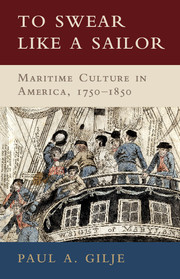Book contents
- Frontmatter
- Dedication
- Contents
- List of Illustrations
- Acknowledgments
- List of Abbreviations
- Introduction
- 1 To Swear Like a Sailor
- 2 The Language of Jack Tar
- 3 The Logbook of Memory
- 4 Spinning Yarns
- 5 Songs of the Sailorman
- 6 The Pirates Own Book
- 7 Tar-Stained Images
- Epilogue: The Sea Chest
- Appendix: A Note on Logbooks and Journals Kept at Sea
- Notes
- Bibliography of Primary Sources
- Index
7 - Tar-Stained Images
Published online by Cambridge University Press: 05 February 2016
- Frontmatter
- Dedication
- Contents
- List of Illustrations
- Acknowledgments
- List of Abbreviations
- Introduction
- 1 To Swear Like a Sailor
- 2 The Language of Jack Tar
- 3 The Logbook of Memory
- 4 Spinning Yarns
- 5 Songs of the Sailorman
- 6 The Pirates Own Book
- 7 Tar-Stained Images
- Epilogue: The Sea Chest
- Appendix: A Note on Logbooks and Journals Kept at Sea
- Notes
- Bibliography of Primary Sources
- Index
Summary
Although not every image of the sailor, or created by him, was tar-stained, emphasizing the relationship between this gooey dark substance and pictures of the seaman serves as an appropriate heading for this chapter. As we have already seen, sailors were identified with tar. Almost everything they touched dripped with tar. They worked with tar daily, coating much of the ship in the ubiquitous material. Mariners also covered their broad-brimmed flat straw hats with tar. This sailor cap, often referred to as a tarpaulin, usually had a riband wrapped around it with a tail at the back end, and became as identifiable with the maritime world in the first half of the nineteenth century as the cowboy hat would become identifiable with the Wild West later in American history. What we do not see was that tar often covered more than the sailor's hat. Mariners understood the waterproof qualities of this resin produced by burning pine at high temperatures and coated their duck trousers and their jackets with it. They also took pride in their “sea tan” – a combination of exposure to the sun and the tar that had worked its way into their skin. On some level any artist who drew a picture of a mariner in the age of sail had to either include some of that tar or purposefully exclude it. Likewise, a seaman who picked up a pen or began to work with a whale's tooth or wood to create a material object probably had to scrape the tar from his fingers first. This chapter explores the images portraying sailors, the images created by sailors, and the images in sailors’ minds – images that on one level or another were stained with tar. We will begin with an examination of how the rest of society imagined the mariner, tracing the emergence of Jack Tar as a powerful pictorial symbol of the American nation in the early nineteenth century. The second half of this chapter focuses on the art of the sailor, exploring when and how sailors embraced that image. Although sailors accepted the depiction of themselves as contributors to the nation's well-being, and could use that image when creating objects for others, when it came to personal artistic expressions they were more interested in their ships, the world around them, and the world they left behind.
- Type
- Chapter
- Information
- To Swear like a SailorMaritime Culture in America, 1750–1850, pp. 223 - 262Publisher: Cambridge University PressPrint publication year: 2016



